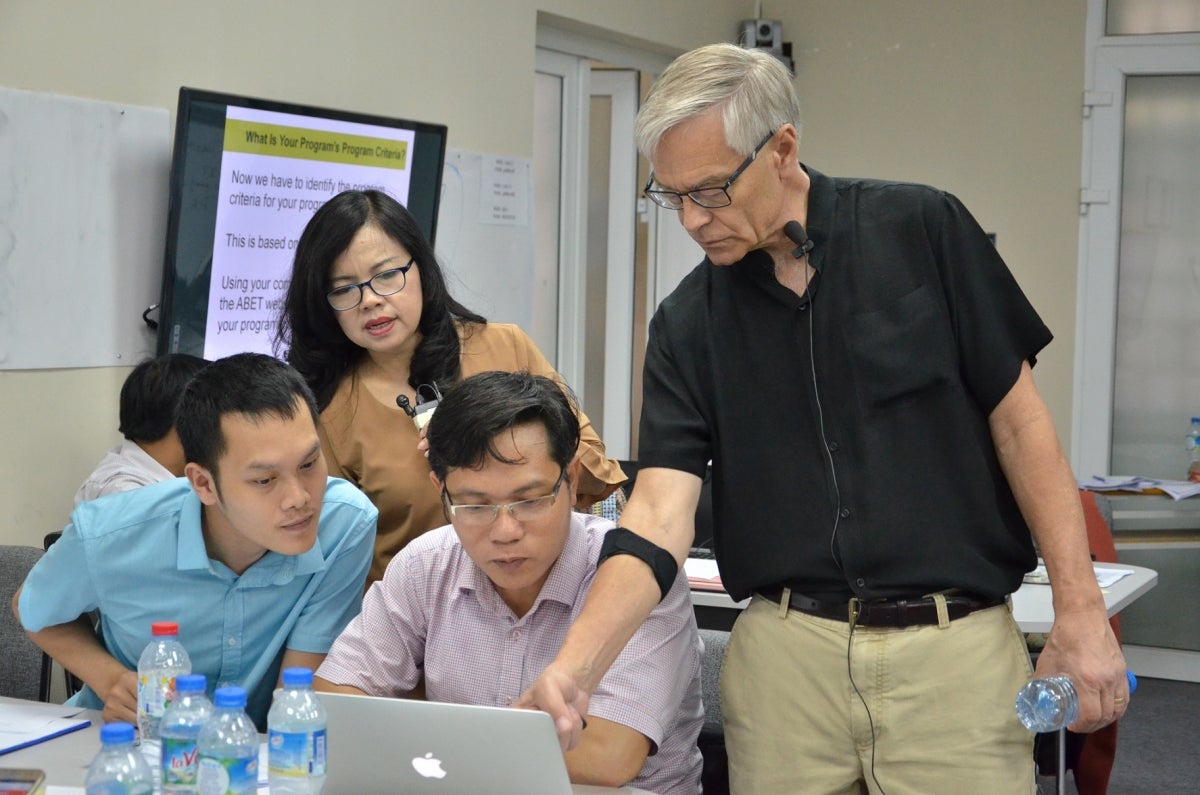- -

ASU: Dr. Scott Danielson, Mr. Thai Tran & Ms. Ha Mai
Attendees: Assessors, QA leadership, academic leadership involved in course evaluations, lead faculty.
Background: Most accrediting/evaluation agencies and organizations use a peer-review process to assure programs meet standards of compliance to with the evaluation criteria or expectations. Usually, this process utilizes a two-step process in which assessors first evaluate a program’s self-study report (SSR or self-assessment report SAR)—sometimes called a desktop assessment. The second step usually involves a site visit, although in current times these site visit may be done via distance technology, e.g., Zoom. The first step, the review of the SSR forms a preliminary assessment of the program compliance with criteria or expectations. Thus, the SSR/SAR is a very critical document as it is the basis for an initial quantitative and qualitative assessment of program strengths and limitations. As the second step, the site visit allows the assessment team to evaluate factors that cannot be adequately described in written form and to confirm, via additional evidence, the statements made in the SSR/SAR. It is upon this more complete evaluation that the team makes its recommendations about program compliance with the criteria or expectations. Expected Outcomes: These workshops seek to provide information and “best practices” for VNU-HCMC CEA assessors related to verifying SSR contents/statements while on a campus. Ideally, this body of evidence enables sound judgement and objective findings. The first workshop focuses on techniques to verify key information and documents mentioned in the SSR/SAR by inspecting documents provided during the on-site visit in an efficient manner. Selected evaluation criteria/standards will be used to provide context. Since MOET requirements are very similar to AUN-QA’s requirements, AUN-QA requirements will be used as they are published in English. These workshops seek to provide information and “best practices” for IUH leaders, quality assurance staff and program accreditation teams related to verifying SSR contents/statements while on a campus. The first workshop focuses on techniques to verify key information and documents mentioned in the SSR/SAR by inspecting documents provided during the on-site visit in an efficient manner (or electronic materials if a virtual visit). Selected evaluation criteria/standards will be used to provide context. The second workshop focuses on interviews—individual and group—with students, faculty members, administrators and staff. These interviews may be one-on-one for high level administrators and program leaders. Lecturers may have individual interviews or as groups of lecturers. Students and laboratory staff may also be group interviews. Different techniques and questions are often used with these groups—yet the questions are based on a common objective—providing evidence related to compliance with criteria or standards.


